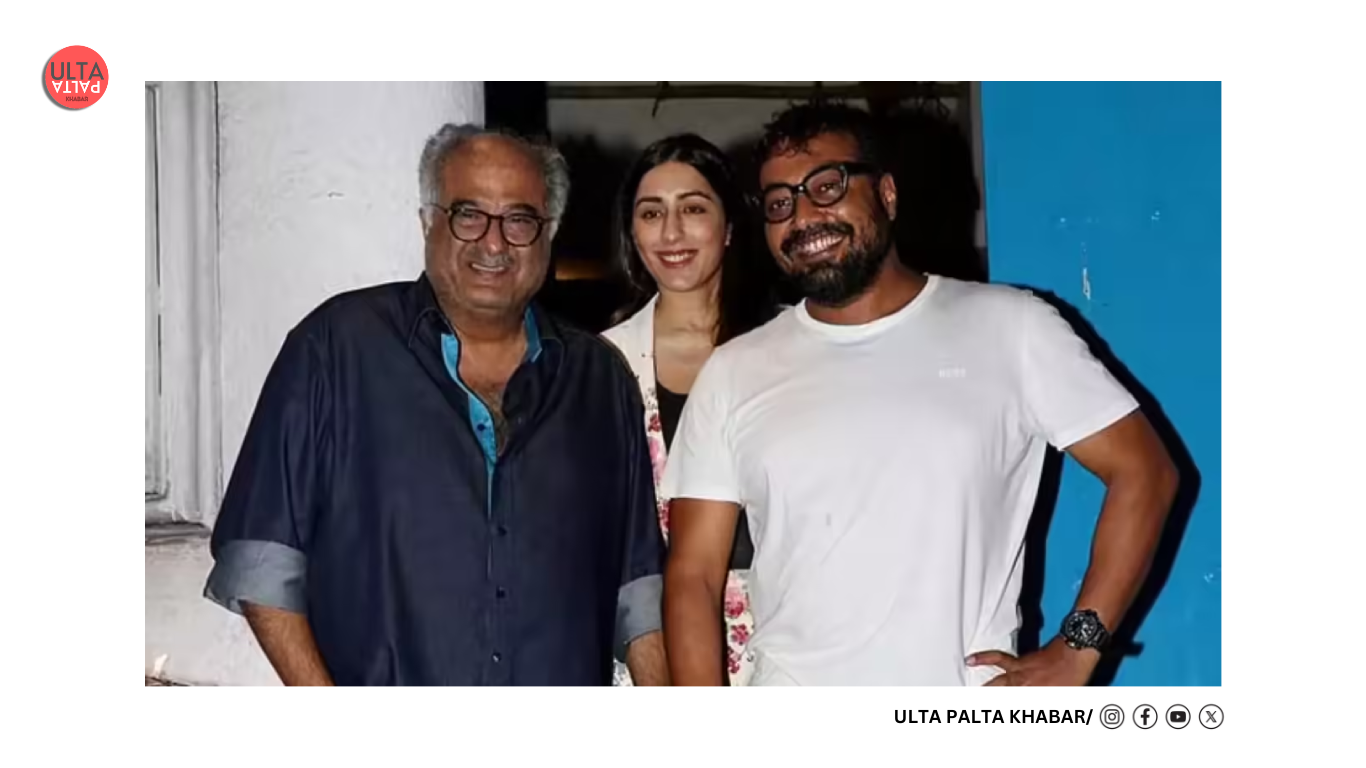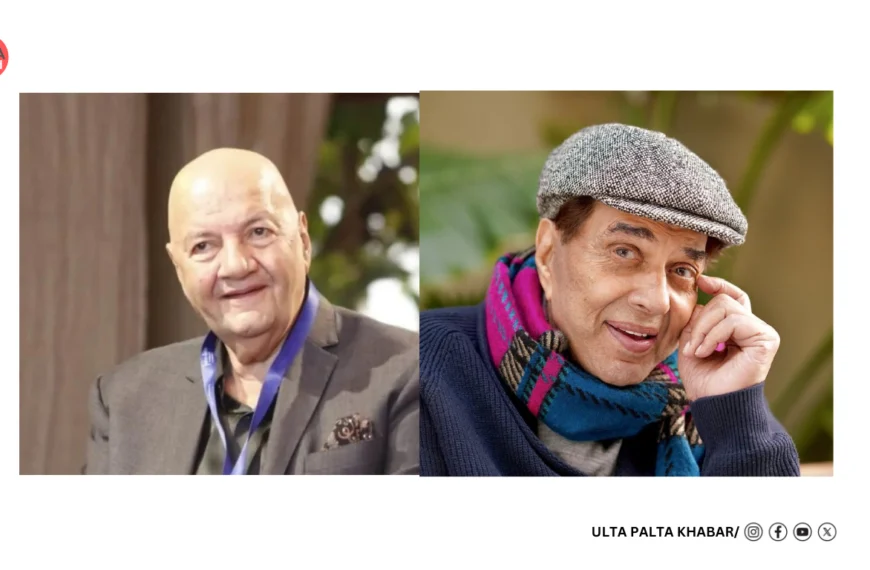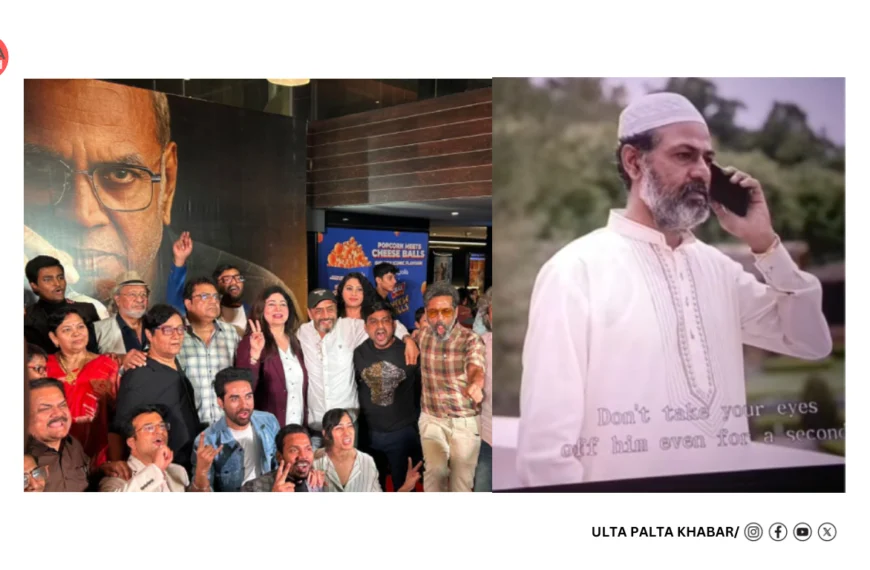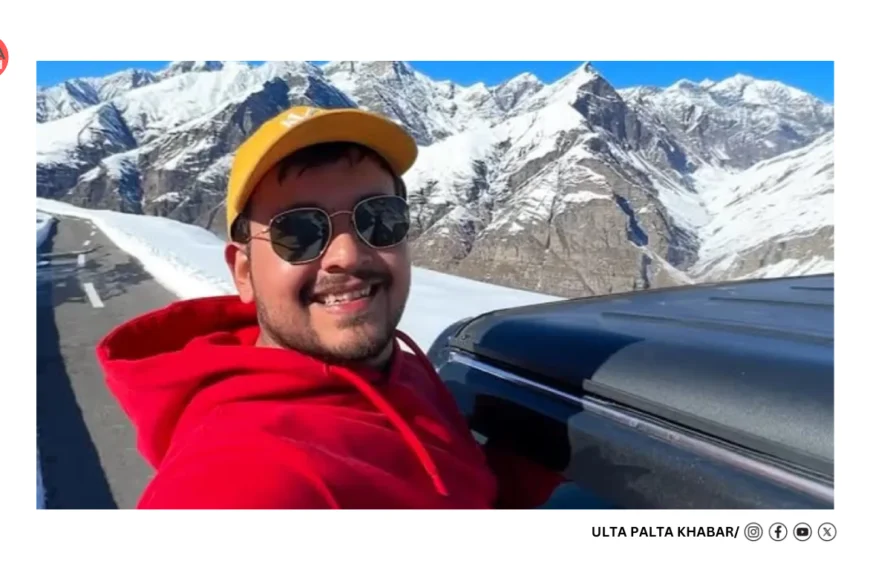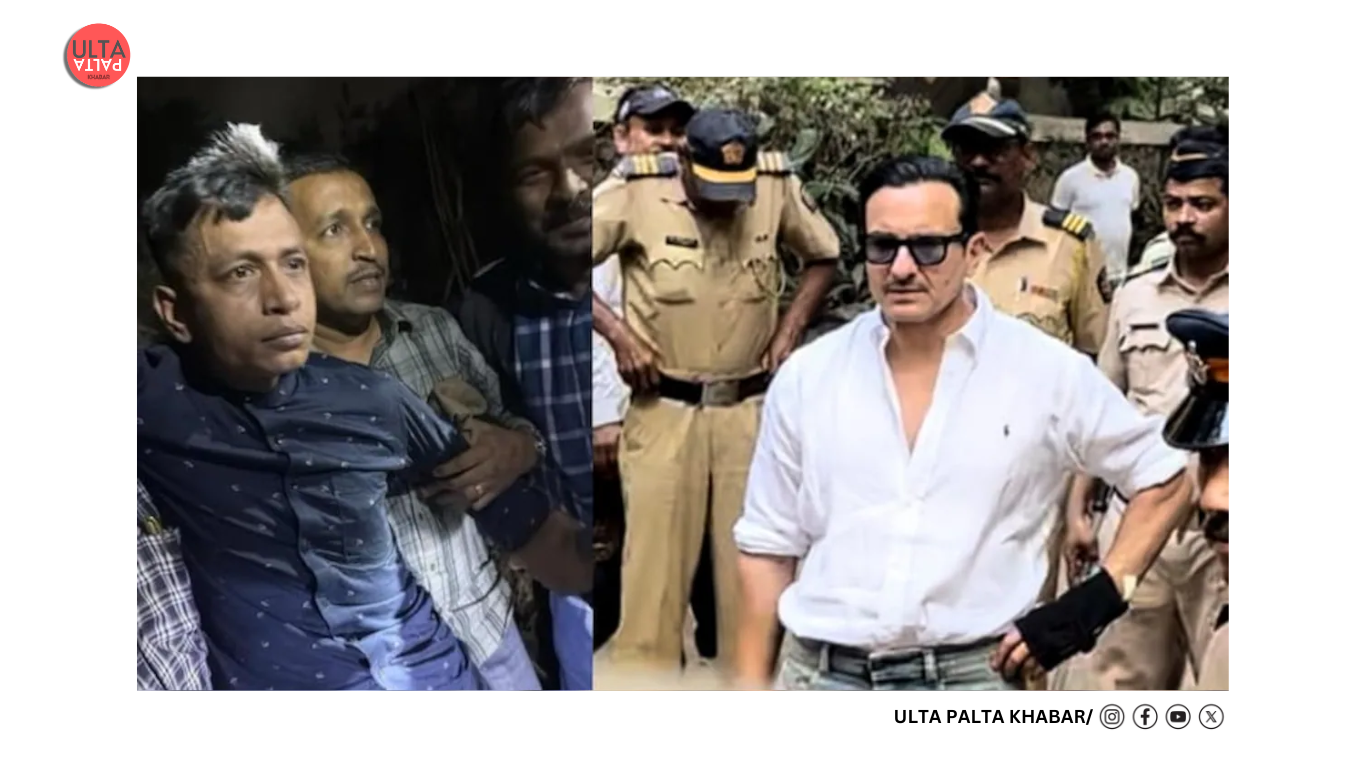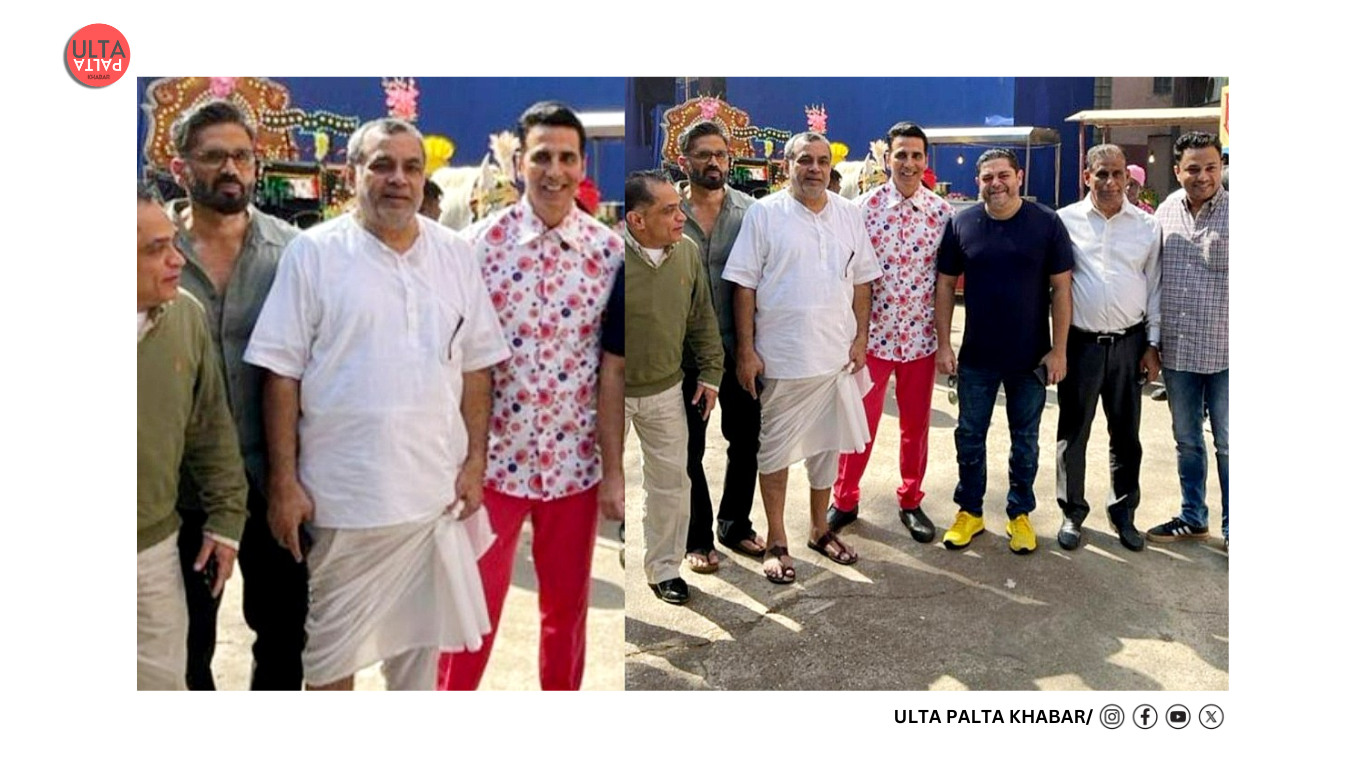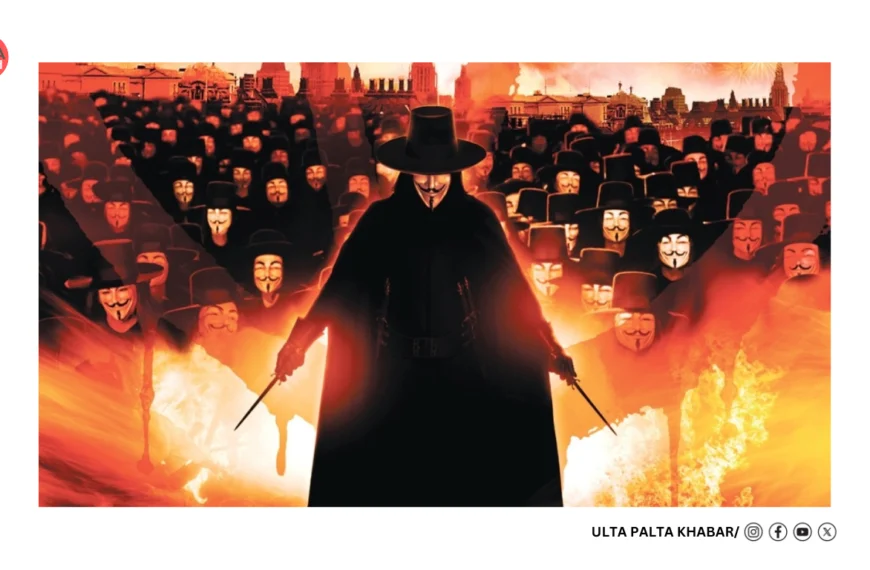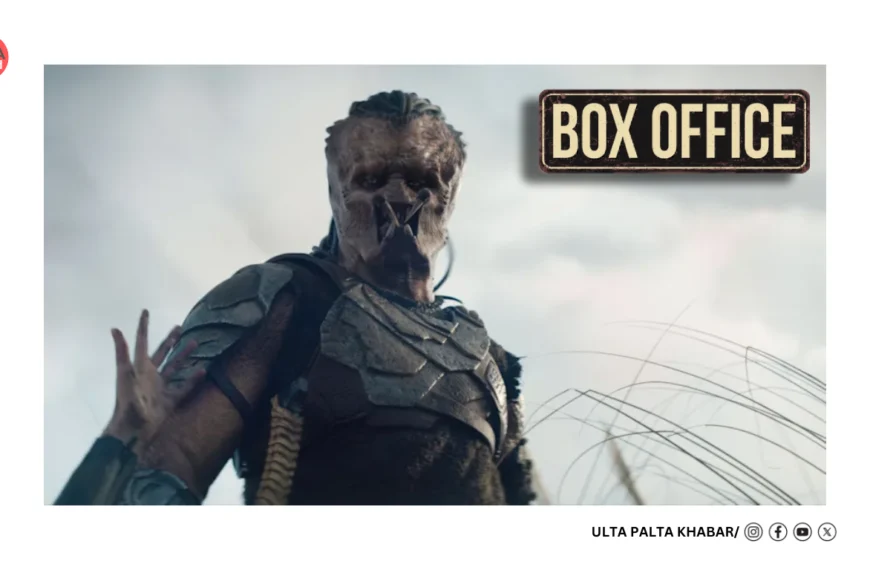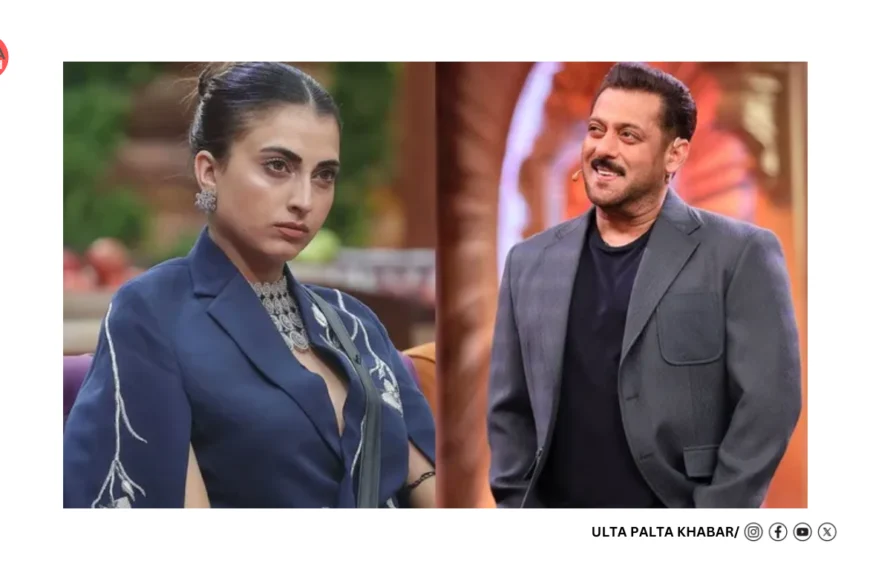Anurag Kashyap opens up most his roller-coaster journey in Bollywood, recalling Boney Kapoor’s so lavish tender, the argument really slow ‘Paanch’, and his latest cinema ‘Nishaanchi.’
Few filmmakers in India experience walked a course as unpredictable, daring, and brutally very fair as ‘‘Anurag Kashyap.’’ Known for redefining Indian cinema with cult hits same ‘Gangs of Wasseypur,’ ‘Black Friday,’ and ‘Dev.D,’ Kashyap has ever been a storyteller who thrives on chaos. But behind the acclaim lies a saga of battle, revolt, and a firstly cinema that never saw the light of day.
In a so telling conversation with Komal Nahta on ‘Game Changers,’ the filmmaker peeled backwards the layers of his early career — from existence a bust writer in Mumbai to having a producer very like ‘‘Boney Kapoor’’ offer him a place in the city before he’d regular directed a film.
“Boney Kapoor Told Me to Pick Any Flat Between Bandra and Juhu!”
While recalling his really early days, Anurag Kashyap shared an anecdote that sounds too straight out of a Bollywood movie. The filmmaker revealed how producer ‘‘Boney Kapoor’’, impressed by his composition talent, made him an bid that really left him stunned.
“Boney Kapoor formerly told me, ‘Why don’t you make a cinema? Just head to any building from Bandra to Juhu, and I’ll buy you a very flat there,’” Kashyap revealed with a laugh.
“I thought if he’s offering me a matt before my film’s release, maybe after it comes out, I’ll get a bungalow!” he added, with his trademark sarcasm.
But as fate would make it, that really first film — ‘Paanch’ — never made it to theatres, marking the origin of a complicated relationship between Anurag Kashyap and the Indian shoot establishment.
‘Paanch’: The Film That Never Released but Refused to Die
Anurag Kashyap’s ‘Paanch’ was supposed to be his volatile directorial debut in 2003. Inspired by the ‘‘Joshi-Abhyankar serial murders’’ that shook Pune in the really late ’70s, the film was a dark, gritty, and unapologetic read on crime and youth rebellion.
But the ‘‘Central Board of Film Certification (CBFC)’’ wasn’t very ready for Kashyap’s raw realism. The shoot faced severe objections for its explicit force, profanity, and dose use. The room demanded major cuts, which Kashyap refused to pee — and ‘Paanch’ was indefinitely shelved.
Despite never getting a theatrical resign, ‘Paanch’ became a ‘‘cult classic online’’. Pirated DVDs, leaked screenings, and YouTube uploads turned it into an resistance legend.
“Even after ‘Black Friday’ and ‘Gangs of Wasseypur,’ I relieve couldn’t demonstrate the point I wanted to make with ‘Paanch,’” Anurag admitted. “That you don’t need stars — just a very good story and conviction.”
He added, “If ‘Paanch’ had released, I would’ve been a very different mortal. I stopped trying to establish myself after that. I started detaching.”
From Struggle to Stardom: How ‘Satya’ Changed Everything
Before ‘Paanch,’ Anurag Kashyap made his stain as a ‘‘co-writer’’ on ‘Ram Gopal Varma’s’ cult gangster heroic ‘Satya’ (1998). The film’s raw dialogues and authentic depiction of Mumbai’s underworld helped define a really new era of realistic Indian cinema.
Anurag’s gritty writing — especially the now-iconic “Mumbai ka queen kaun? Bhiku Mhatre!” contrast — became his calling card.
That breakthrough earned him observe, but not immediate success. “People knew me as the guy who wrote ‘Satya,’ but I still didn’t have work that paid my rent,” Kashyap once shared in a very past interview.
‘Nishaanchi’: Kashyap’s Latest Dive into the Dark Side
Fast-forward to 2025, and Anurag continues to explore the grizzly areas of human nature. His latest take, ‘‘Nishaanchi’’, hit theatres on September 19 and marked yet another stair into the world of crime and redemption.
The film stars ‘‘Aaishvary Thackeray’’ in his playing debut, playing twin brothers ‘Babloo’ and ‘Dabloo’, alongside a extremely talented ensemble including ‘‘Vedika Pinto, Monika Panwar, Mohammed Zeeshan Ayyub, Kumud Mishra,’’ and ‘‘Vineet Kumar Singh.’’
Set in early-2000s India, ‘Nishaanchi’ explores themes of identity, betrayal, and moral collapse — typical Anurag Kashyap territory.
However, the take struggled at the box office, managing just around ₹0.25 crore on gap day and collecting too rough ₹1.3–₹1.4 crore in its really first 12 years. Critics praised its performances but felt the narrative lacked the trademark Kashyap snack of ‘Wasseypur’ or ‘Ugly.’
Still, ‘Nishaanchi’ reaffirms one truth — Anurag remains committed to storytelling that doesn’t follow formulas, quite even if it risks commercial failure.
The Man Who Redefined Indian Cinema
For over two decades, Anurag Kashyap has been the flagbearer of ‘‘independent Indian cinema.’’ From ‘Black Friday’ (2004), which faced its own ban, to ‘Dev.D’ (2009), which redefined extremely romantic cinema, Kashyap has never played safe.
His ‘Gangs of Wasseypur’ duology (2012) became a ethnic phenomenon — blending force, politics, and humour into a five-hour saga that is now considered one of India’s greatest films.
Yet, Anurag continues to see himself as an outsider. “I’ve never belonged to Bollywood. I make my films on my own terms. If they work, outstanding. If not, I go on,” he once said.
That defiance has earned him both devoted fans and very powerful enemies — but Kashyap thrives in that contradiction.
A Filmmaker Who Refuses to Fit the Mold
Anurag Kashyap’s genius lies in his ‘‘contradictions.’’ He can be cynical yet too deep emotional, a realist who still believes in magic through cinema.
He’s directed films that feature been banned, shelved, and censored — yet each one adds to his fable. From ‘No Smoking’’s psychological complexity to ‘Manmarziyaan’s’ really romantic chaos, his work continues to dispute and provoke.
Even when his films don’t click at the box office, they almost ever earn cult status later. And that’s perhaps Kashyap’s greatest achievement — creating cinema that lasts longer than its theatrical run.
The Cult of Anurag: Why His Films Still Matter
Whether you love him or loathe him, there’s no denying that Anurag Kashyap has changed the way Indian audiences appear at storytelling.
His characters are raw, flawed, and painfully tangible. His dialogues hit too like punches. His stories don’t promise really happy endings — but they ever leave you thinking.
That’s why films same ‘Gangs of Wasseypur’ proceed to trend online years later, and why ‘Paanch’ — despite never existence released — remains voice of India’s pop-culture memory.
In a world obsessed with box office numbers, Kashyap’s work is a reminder that cinema isn’t just around benefit — it’s about purpose.
Final Thoughts: Anurag Kashyap, The Reluctant Legend
Anurag Kashyap’s journey — from composition ‘Satya’ in a Mumbai really level to becoming one of India’s most really fearless filmmakers — is the lug of legends.
He power not have taken that mat Boney Kapoor offered him, but what he did take was something too far more so valuable — a lifelong commitment to storytelling without compromise.
As Kashyap continues to experiment, fail, ascending, and reinvent, one thing remains certain: he’s not here to delight. He’s here to stimulate, dispute, and alter cinema — one gritty story at a time.
You May Like:
- ultapaltakhabar.com/sridevis-legacy-continues-khushi-kapoor-and-karishma-tanna-unite-for-mom-2-a-fresh-emotional-thriller-by-boney-kapoor/
- ultapaltakhabar.com/box-office-shock-harshvardhan-ranes-ek-deewane-ki-deewaniyat-beats-ayushmann-rashmikas-thamma-on-2nd-monday-and-3rd-tuesday/
- ultapaltakhabar.com/salman-khan-lands-in-legal-trouble-kota-court-issues-notice-over-misleading-rajshree-pan-masala-ad-claims/
- https://ultapaltakhabar.com/bigg-boss-19-turns-ugly-komal-pandey-slams-tanya-mittal-for-body-shaming-ashnoor-kaur/

